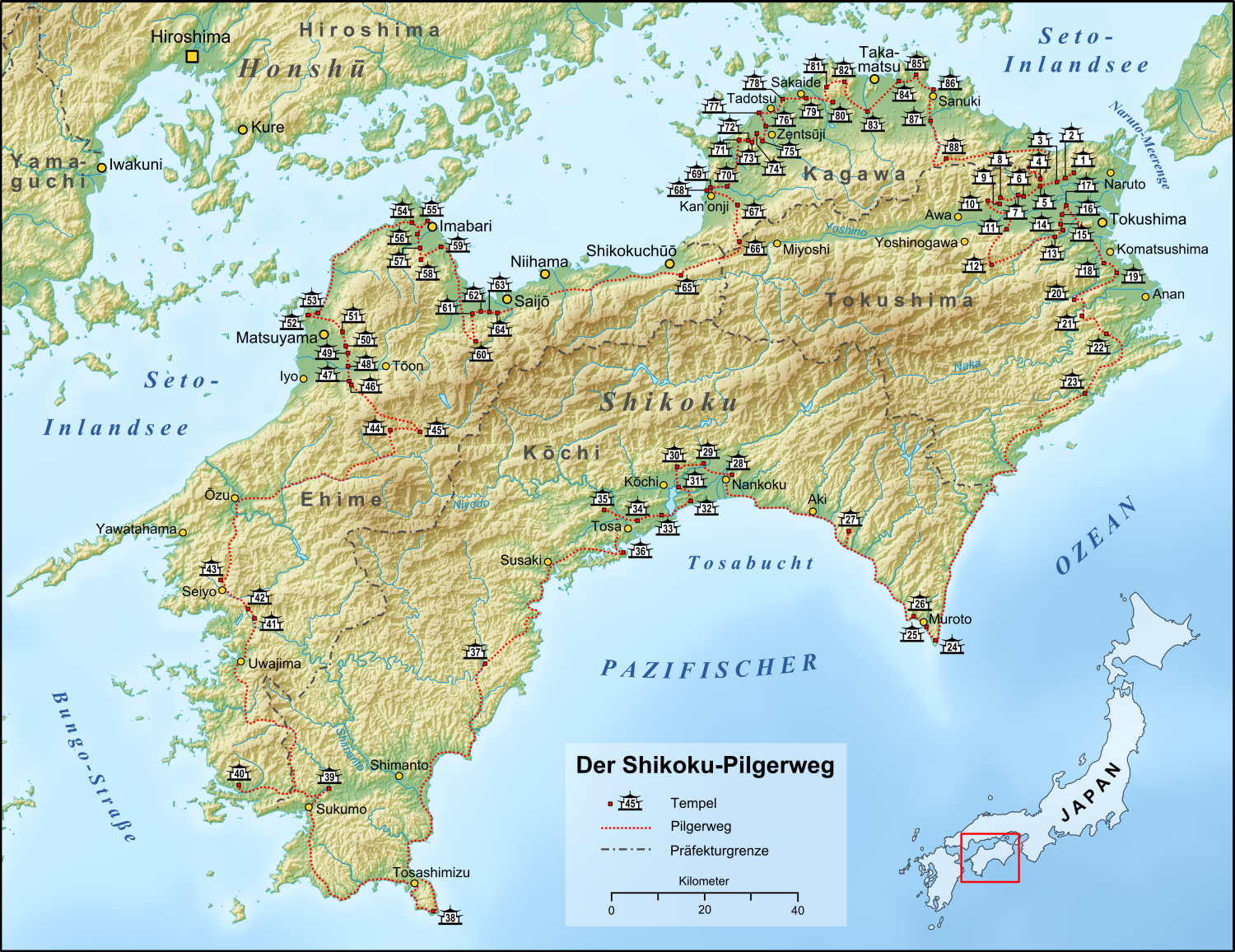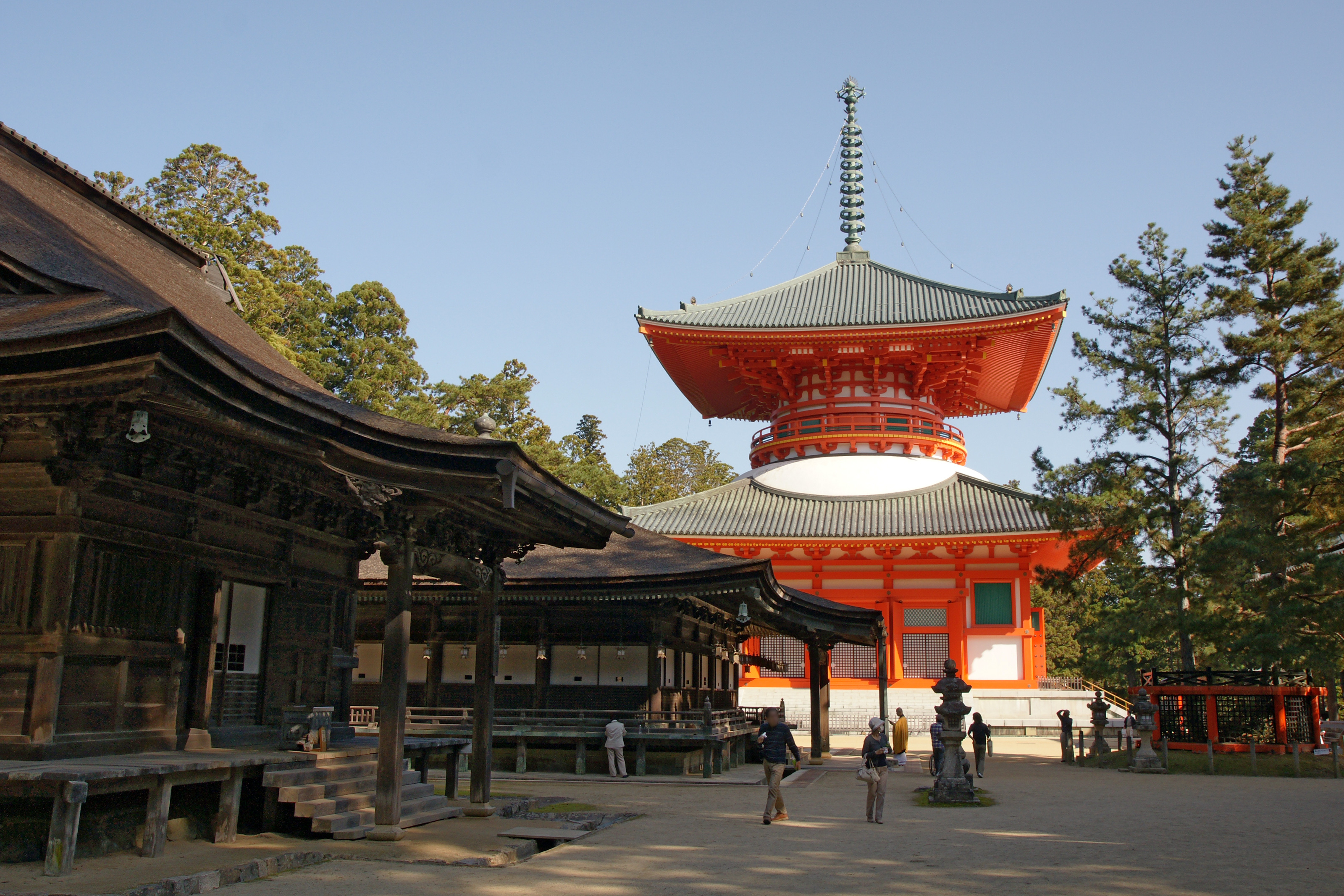|
Kongōchō-ji
Kongōchō-ji is a Shingon Buddhist Temple located in Muroto, Kōchi, Japan. It is the 26th temple of the Shikoku Pilgrimage The or is a multi-site pilgrimage of 88 temples associated with the Buddhist monk Kūkai (''Kōbō Daishi'') on the island of Shikoku, Japan. A popular and distinctive feature of the island's cultural landscape, and with a long history, .... References Buddhist pilgrimage sites in Japan Buddhist temples in Kōchi Prefecture Kōyasan Shingon temples Shikoku Pilgrimage Sites {{Japan-Buddhist-temple-stub ... [...More Info...] [...Related Items...] OR: [Wikipedia] [Google] [Baidu] |
Shikoku Pilgrimage
The or is a multi-site pilgrimage of 88 temples associated with the Buddhist monk Kūkai (''Kōbō Daishi'') on the island of Shikoku, Japan. A popular and distinctive feature of the island's cultural landscape, and with a long history, large numbers of pilgrims, known as , still undertake the journey for a variety of ascetic, pious, and tourism-related purposes. The pilgrimage is traditionally completed on foot, but modern pilgrims use cars, taxis, buses, bicycles, or motorcycles, and often augment their travels with public transportation. The standard walking course is approximately long and can take anywhere from 30 to 60 days to complete. In addition to the 88 "official" temples of the pilgrimage, there are 20 ''bekkaku'' (別格) temples, which are officially associated with the Shikoku Pilgrimage (and hundreds more ''bangai'' (番外) temples, simply meaning "outside the numbers," which are not considered part of the official 88). To complete the pilgrimage, it ... [...More Info...] [...Related Items...] OR: [Wikipedia] [Google] [Baidu] |
Muroto, Kōchi
270px, Muroto City Hall 270px, Muroto city center aerial photograph is a city located in Kōchi Prefecture, Japan. , the city had an estimated population of 11,633 in 6906 households and a population density of 47 persons per km2. The total area of the city is . Geography Muroto is located in the southeastern tip of Kōchi Prefecture on the island of Shikoku. It occupies Cape Muroto which juts out into the Pacific Ocean. Parts of the city are within the borders of the Muroto-Anan Kaigan Quasi-National Park. The entire territory of Muroto is "Muroto Global Geopark" which is a member of the Japanese Geoparks Network and Global Geoparks Network since 2011 on account of its outstanding geological heritage, educational programs and projects, and promotion of geotourism. Geology Cape Muroto is made up of Oligocene to Pleistocene-aged sedimentary rocks and loose Holocene-aged alluvial deposits. The rocks belong to the Shimanto Supergroup, represented in the peninsula as mudstone, a ... [...More Info...] [...Related Items...] OR: [Wikipedia] [Google] [Baidu] |
Kōchi Prefecture
is a prefecture of Japan located on the island of Shikoku. Kōchi Prefecture has a population of 669,516 (1 April 2023) and has a geographic area of 7,103 km2 (2,742 sq mi). Kōchi Prefecture borders Ehime Prefecture to the northwest and Tokushima Prefecture to the northeast. Kōchi is the capital and largest city of Kōchi Prefecture, with other major cities including Nankoku, Shimanto, and Kōnan. Kōchi Prefecture is located on Japan's Pacific coast surrounding a large bay in the south of Shikoku, with the southernmost point of the island located at Cape Ashizuri in Tosashimizu. Kōchi Prefecture is home to Kōchi Castle, considered the most intact Japanese castle, and the Shimanto River, one of the few undammed rivers in Japan. History Antiquity Before the Ritsuryō System In the Kujiki, first recorded governments in Kōchi Prefecture were Hata (in the west) and Tosa (in the center). Hata was established first, so it is thought that it had more influen ... [...More Info...] [...Related Items...] OR: [Wikipedia] [Google] [Baidu] |
Shingon
is one of the major schools of Buddhism in Japan and one of the few surviving Vajrayana lineages in East Asian Buddhism. It is a form of Japanese Esoteric Buddhism and is sometimes called "Tōmitsu" (東密 lit. "Esoteric [Buddhism] of Tō-ji"). The word ''shingon'' is the Kan-on, Japanese reading of the Traditional Chinese characters, Chinese word ('), which is the translation of the Sanskrit word mantra. The Chinese Esoteric Buddhism, Zhēnyán lineage was founded in China (c. 7th–8th centuries) by Indian Vajracharya, vajrācāryas (esoteric masters) like Śubhakarasiṃha, Vajrabodhi and Amoghavajra. These esoteric teachings would later flourish in Japan under the auspices of a Buddhist monk named Kūkai (, 774–835), who traveled to Tang dynasty, Tang China and received these esoteric transmissions from a Chinese master named Huiguo (746–805). Kūkai established his tradition at Mount Kōya (in Wakayama Prefecture), which remains the central pilgrimage center of Sh ... [...More Info...] [...Related Items...] OR: [Wikipedia] [Google] [Baidu] |
Japan
Japan is an island country in East Asia. Located in the Pacific Ocean off the northeast coast of the Asia, Asian mainland, it is bordered on the west by the Sea of Japan and extends from the Sea of Okhotsk in the north to the East China Sea in the south. The Japanese archipelago consists of four major islands—Hokkaido, Honshu, Shikoku, and Kyushu—and List of islands of Japan, thousands of smaller islands, covering . Japan has a population of over 123 million as of 2025, making it the List of countries and dependencies by population, eleventh-most populous country. The capital of Japan and List of cities in Japan, its largest city is Tokyo; the Greater Tokyo Area is the List of largest cities, largest metropolitan area in the world, with more than 37 million inhabitants as of 2024. Japan is divided into 47 Prefectures of Japan, administrative prefectures and List of regions of Japan, eight traditional regions. About three-quarters of Geography of Japan, the countr ... [...More Info...] [...Related Items...] OR: [Wikipedia] [Google] [Baidu] |
Buddhist Pilgrimage Sites In Japan
Buddhism, also known as Buddhadharma and Dharmavinaya, is an Indian religion and philosophical tradition based on teachings attributed to the Buddha, a wandering teacher who lived in the 6th or 5th century BCE. It is the world's fourth-largest religion, with about 500 million followers, known as Buddhists, who comprise four percent of the global population. It arose in the eastern Gangetic plain as a movement in the 5th century BCE, and gradually spread throughout much of Asia. Buddhism has subsequently played a major role in Asian culture and spirituality, eventually spreading to the West in the 20th century. According to tradition, the Buddha instructed his followers in a path of development which leads to awakening and full liberation from '' dukkha'' (). He regarded this path as a Middle Way between extremes such as asceticism or sensual indulgence. Teaching that ''dukkha'' arises alongside attachment or clinging, the Buddha advised meditation practices and e ... [...More Info...] [...Related Items...] OR: [Wikipedia] [Google] [Baidu] |
Buddhist Temples In Kōchi Prefecture
Buddhism, also known as Buddhadharma and Dharmavinaya, is an Indian religion and philosophical tradition based on teachings attributed to the Buddha, a wandering teacher who lived in the 6th or 5th century BCE. It is the world's fourth-largest religion, with about 500 million followers, known as Buddhists, who comprise four percent of the global population. It arose in the eastern Gangetic plain as a movement in the 5th century BCE, and gradually spread throughout much of Asia. Buddhism has subsequently played a major role in Asian culture and spirituality, eventually spreading to the West in the 20th century. According to tradition, the Buddha instructed his followers in a path of development which leads to awakening and full liberation from '' dukkha'' (). He regarded this path as a Middle Way between extremes such as asceticism or sensual indulgence. Teaching that ''dukkha'' arises alongside attachment or clinging, the Buddha advised meditation practices and Buddh ... [...More Info...] [...Related Items...] OR: [Wikipedia] [Google] [Baidu] |



